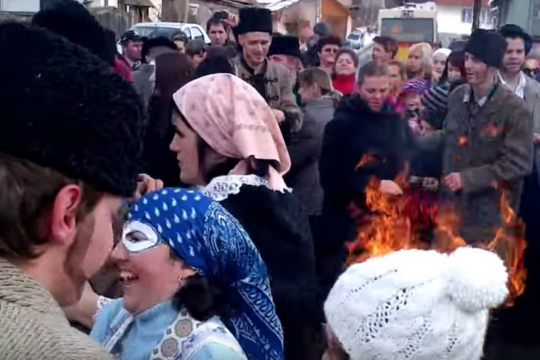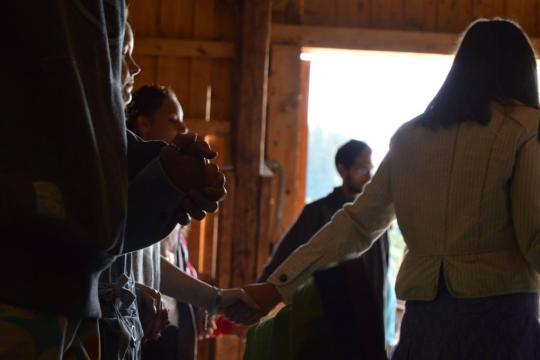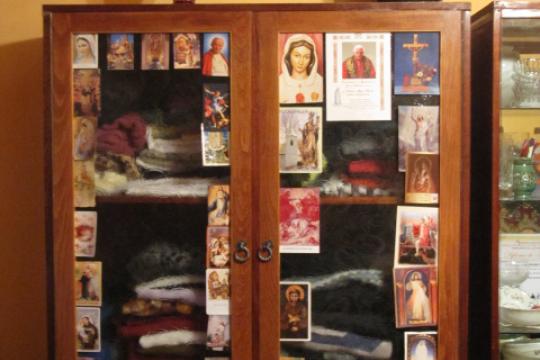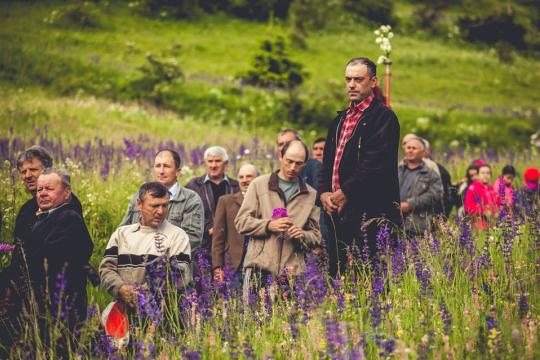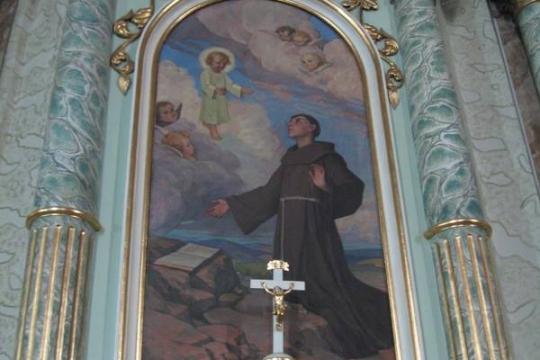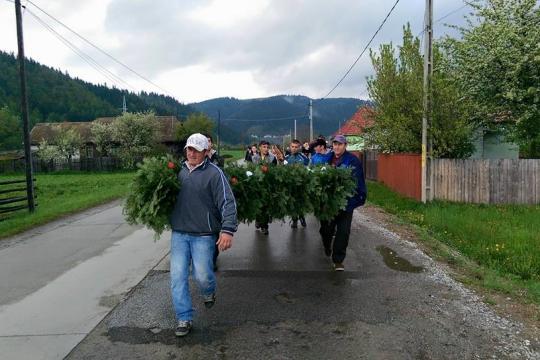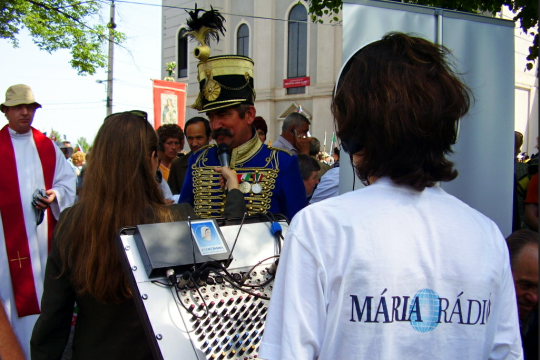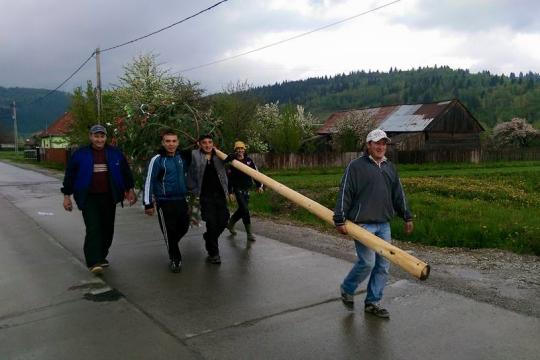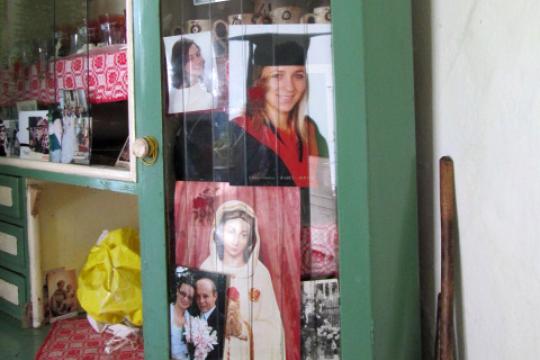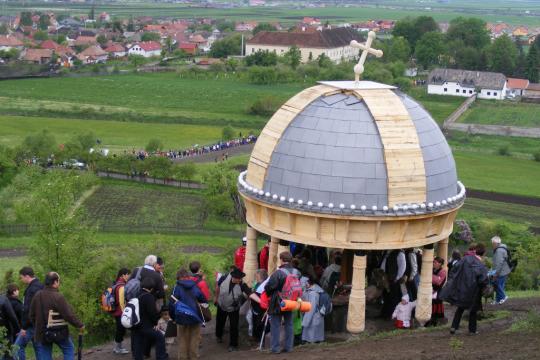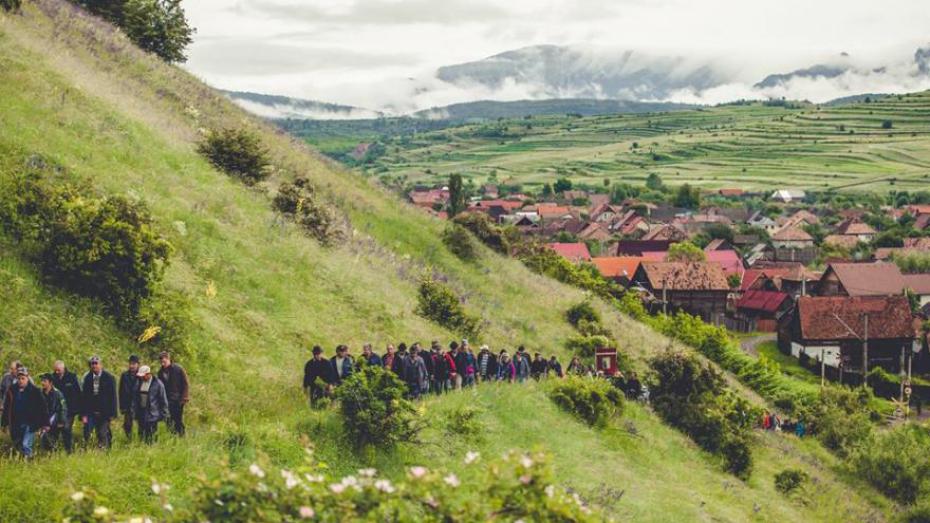
Latin-rite Catholics in Romania are members of an ethnic Hungarian minority, a small community surrounded by Orthodox Christians in one of Europe’s most religiously observant societies. Catholics live mostly in homogenous enclaves in the eastern part of the Transylvania region. There is a sense that these areas are a kind of Catholic homeland. There is a widely-known legend (believed by many ordinary Catholics to be historically true) that the Virgin Mary appeared to a group of Catholics defending this region against an invading Protestant army. An annual pilgrimage to the site of this apparition helps bolster the sense that Catholicism has a “home” in this region. Read more...
Read more
Marc Roscoe Loustau, "Risking a Miracle: Transcendentally-Oriented Improvisation and Catholic Charismatics’ Involvement in a Transylvanian Canonization," The Journal of Contemporary Religion 31 (2016): 335-50, https://doi.org/10.1080/13537903.2016.1206229.
Marc Roscoe Loustau, Hungarian Catholic Intellectuals in Contemporary Romania: Reforming Apostles, Contemporary Anthropology of Religion (Palgrave Macmillan, 2022).
National Demographics
- 1 United Nations, Department of Economic and Social Affairs, Population Division, World Urbanization Prospects: The 2018 Revision, Online Edition (New York: United Nations, 2018).
- 2 United Nations, Department of Economic and Social Affairs, Population Division, International Migrant Stock 2020 (New York: United Nations, 2020).
- 3 Data as of 2021. United Nations Office on Drugs and Crime, "Intentional Homicide," United Nations, Accessed April 9, 2024; United Nations Office on Drugs and Crime, Global Study on Homicide 2023 (Vienna: United Nations, 2023).
- 4 "2023 Corruption Perceptions Index," Transparency International, Accessed April 9, 2024.
- 5 United Nations Children's Fund, The State of the World's Children 2023 (Florence: UNICEF Innocenti – Global Office of Research and Foresight, 2023).
- 6 International Telecommunication Union, "Individuals using the Internet (% of population)," The World Bank, Accessed April 24, 2024.
- 7 Poverty and Inequality Platform, "Poverty headcount ratio at $2.15 a day (2017 PPP) (% of population)," The World Bank, Accessed April 24, 2024.
- 8 World Economic Forum, Global Gender Gap Report 2023 (Geneva: World Economic Forum, 2023).
- 9 As Pew describes it, "Government restrictions on religion include laws, policies and actions that regulate and limit religious beliefs and practices. They also include policies that single out certain religious groups or ban certain practices; the granting of benefits to some religious groups but not others; and bureaucratic rules that require religious groups to register to receive benefits." As noted on pp. 45-47 of the report, the index summarizes data from 19 sources. The index does not differentiate whether the laws are directed toward Catholics. Pew Research Center, Globally, Government Restrictions on Religion Reached Peak Levels in 2021, While Social Hostilities Went Down (Pew Research Center, 2024).
- 10 As Pew describes it, "Social hostilities include actions by private individuals or groups that target religious groups; they also include actions by groups or individuals who use religion to restrict others. The SHI captures events such as religion-related harassment, mob violence, terrorism/militant activity, and hostilities over religious conversions or the wearing of religious symbols and clothing." As noted on pp. 45-47 of the report, the index summarizes data from 19 sources. The index does not differentiate whether the hostilities are directed toward Catholics. Pew Research Center, Globally, Government Restrictions on Religion Reached Peak Levels in 2021, While Social Hostilities Went Down (Pew Research Center, 2024).
Catholic Demographics
These statistics are derived from the Vatican's official publication, Statistical Yearbook of the Church 2022 (Vatican City: Librera Editrice Vaticana, 2024). The numbers may differ from data reported by other sources on this site.
Related Articles
- Radio Maria Transylvania: National Representation, Prayer, and Intersubjectivity in a Growing Catholic Media Network
- Breaching Boundaries: Homogenizing the Dichotomy between the Sacred and Profane in Csíksomlyó
- Radna: The Holy Shrine of the Multinational Banat Region (Romania)
- The Secrets of Christian Others: Hungarian Catholic Intellectuals Debate Ecumenism at a Transylvanian Pilgrimage Site

